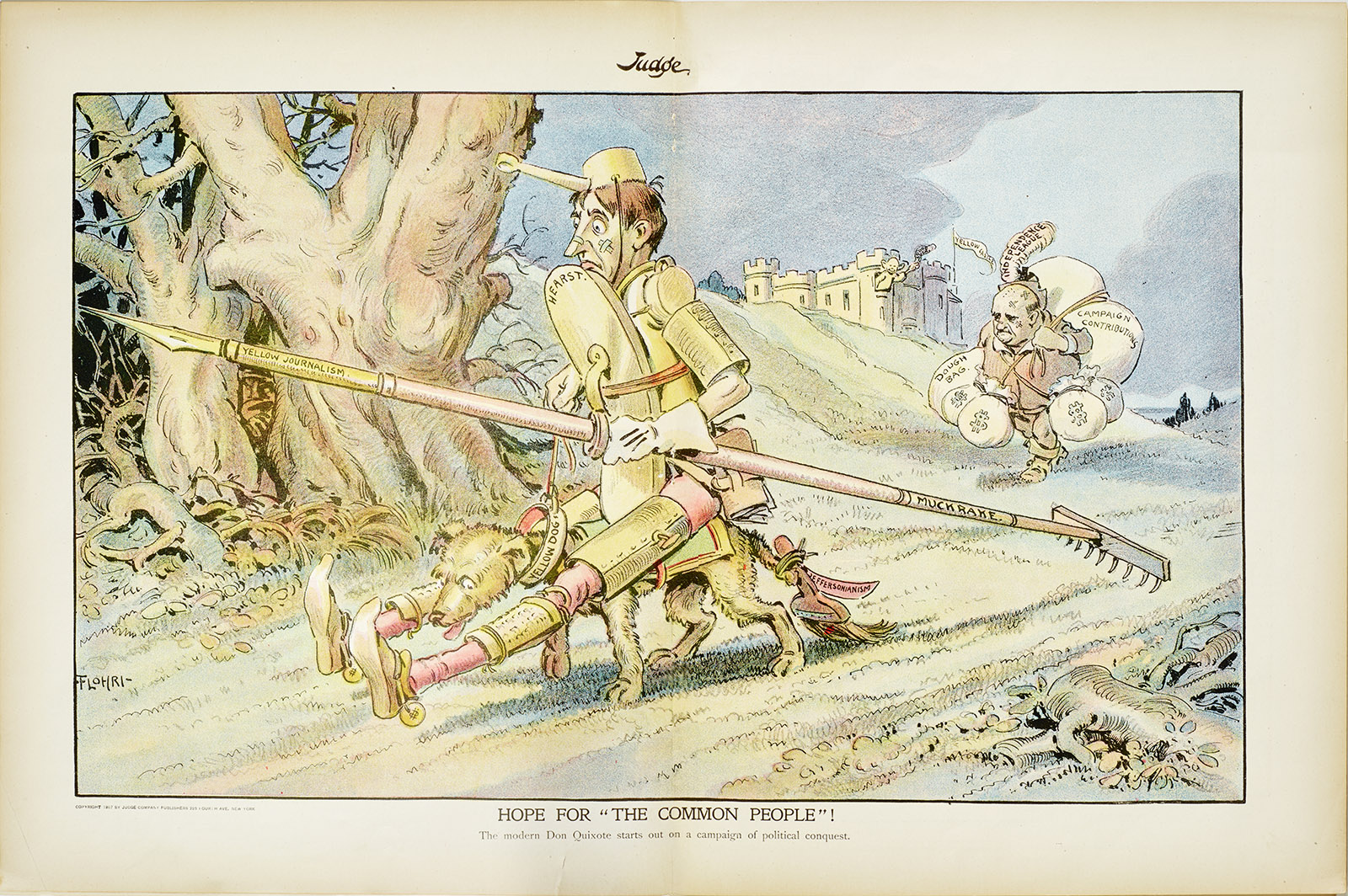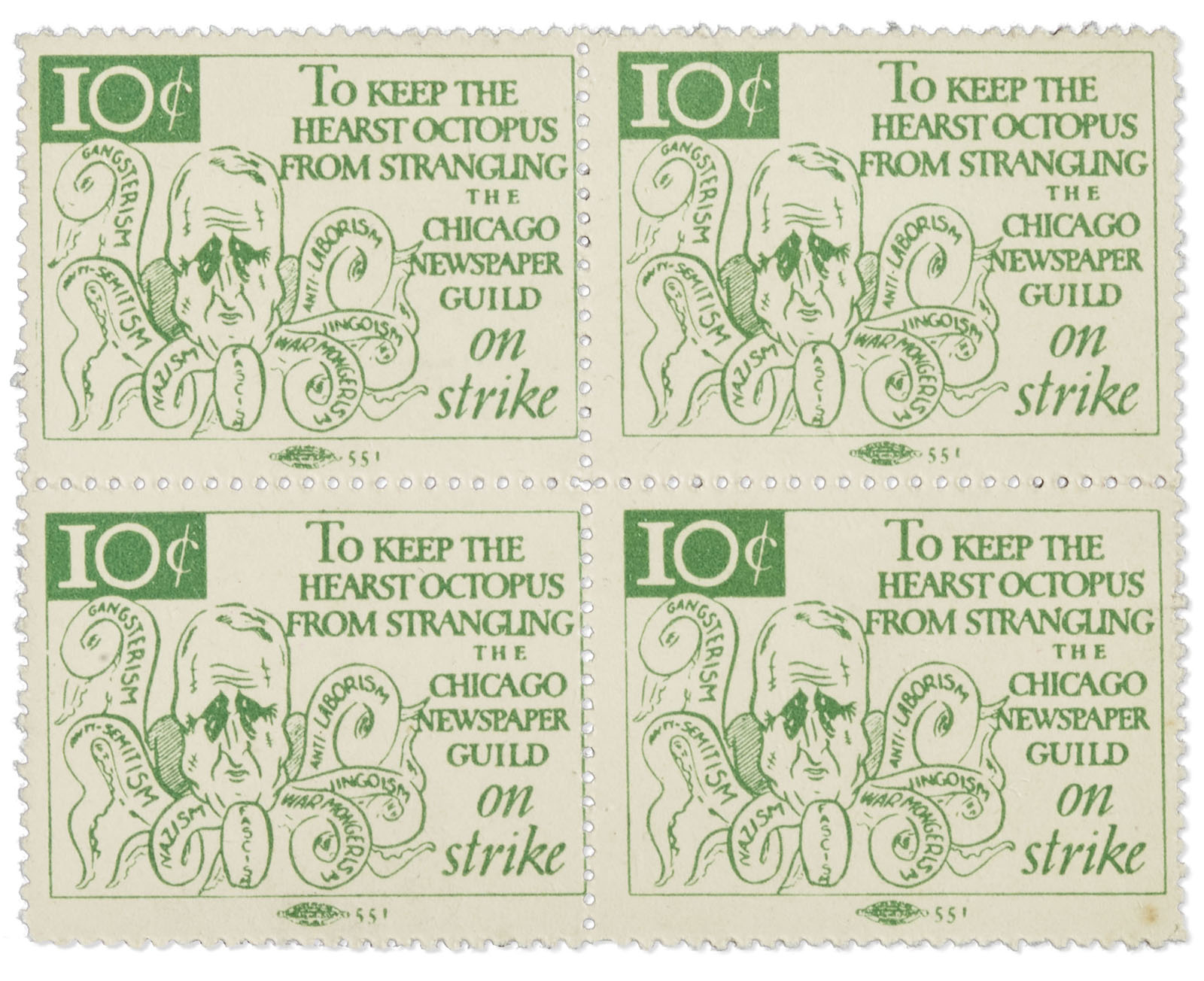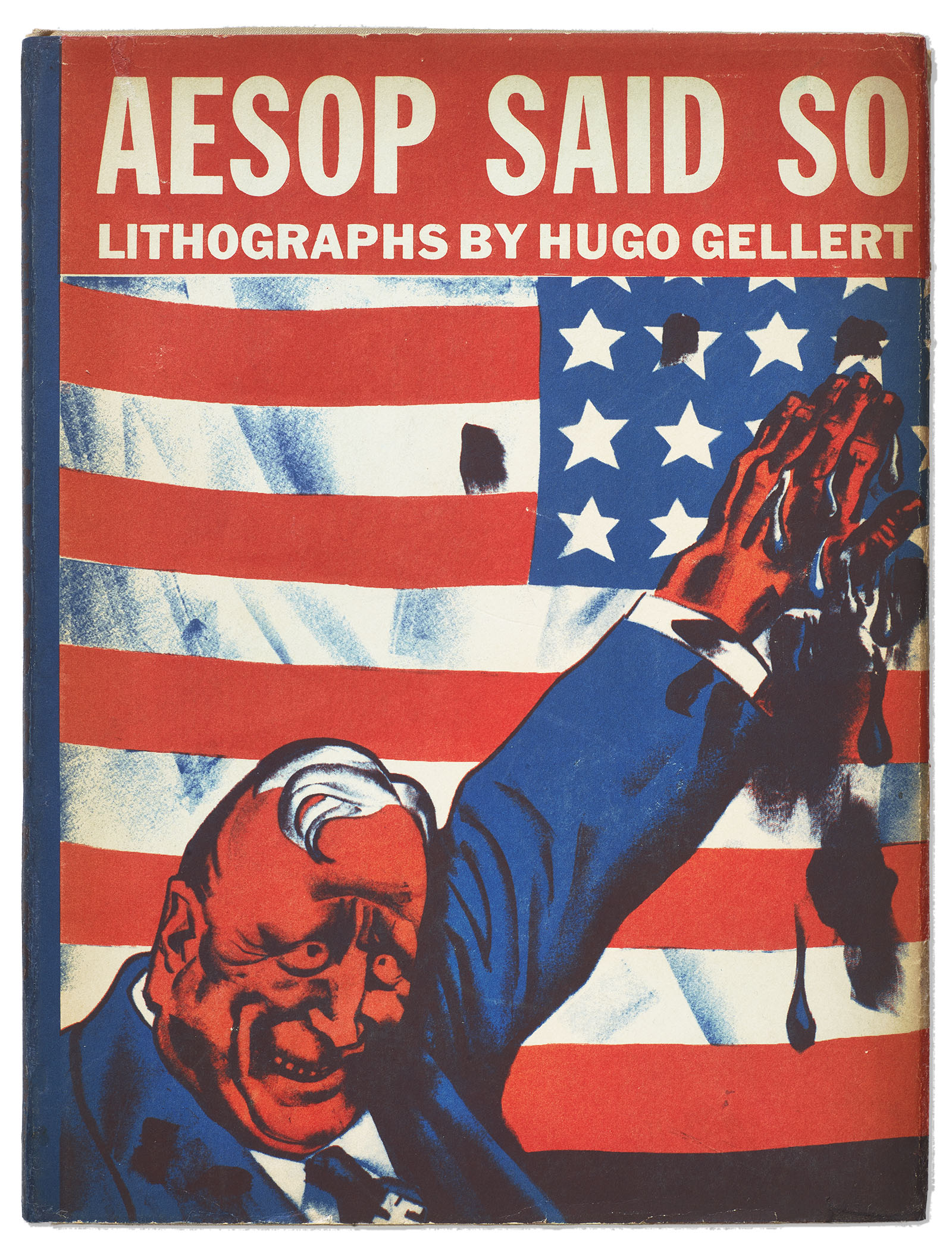HEARST: Lampooning the King of Yellow Journalism
October 17, 2024–March 2, 2025
The Wolfsonian–FIU @ 1001 Washington Avenue
In the late 19th and early 20th centuries, publisher William Randolph Hearst used the tools of "yellow journalism"—sensationalist stories of scandal, sex and violence—to sell papers and forge a powerful media empire. Hearst's attempts to sway public opinion and campaign for high office sparked decades-long criticism, with caricaturists ridiculing him in satirical cartoons. This installation examined Hearst through the lens of this backlash, which culminated in a thinly veiled account of his life in Orson Welles's 1941 film Citizen Kane, released in the twilight of the media mogul's career.
Explore the Installation
Object Highlights
View or download the full installation checklist.
 | Magazine spread, “Hope for ‘The Common People’!,” from Judge, May 18, 1907 |
 | Stickers, To Keep the Hearst Octopus from Strangling the Chicago Newspaper Guild on Strike, 1938 |
 | Book, Aesop Said So, 1936 |
Recommended Resources
Readings
- Marion Davies. The Times We Had: Life With William Randolph Hearst. Indianapolis: Bobbs-Merrill, 1975.
- David Nasaw. The Chief: The Life of William Randolph Hearst. Boston: Houghton Mifflin, 2000.
- Louis Pizzitola. Hearst Over Hollywood: Power, Passion, and Propaganda in the Movies. New York: Columbia University Press, 2002.
- William Andrew Swanberg. Citizen Hearst: A Biography of William Randolph Hearst. New York: Scribner, 1961.
Films
- Citizen Kane. Directed by Orson Welles, RKO Pictures, 1941.
- The Hearst and Davies Affair. Directed by David Lowell Rich, ABC Circle Films, 1985.
- American Experience: The Battle Over Citizen Kane. Directed by Thomas Lennon and Michael Epstein, Lennon Documentary Group, 1996.
- The Cat’s Meow. Directed by Peter Bogdanovich, Lions Gate Films, 2001.
- Mank. Directed by David Fincher, Netflix International Pictures, 2020.
- American Experience: Citizen Hearst. Part 1 directed by Amanda Pollak, Part 2 directed by Stephen Ives, PBS, 2021.



